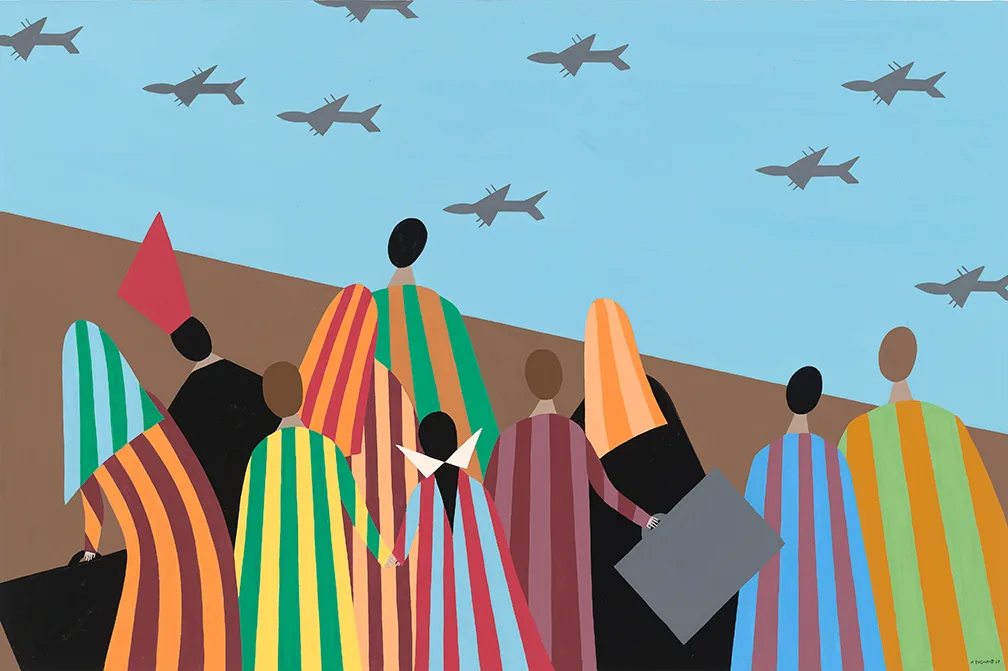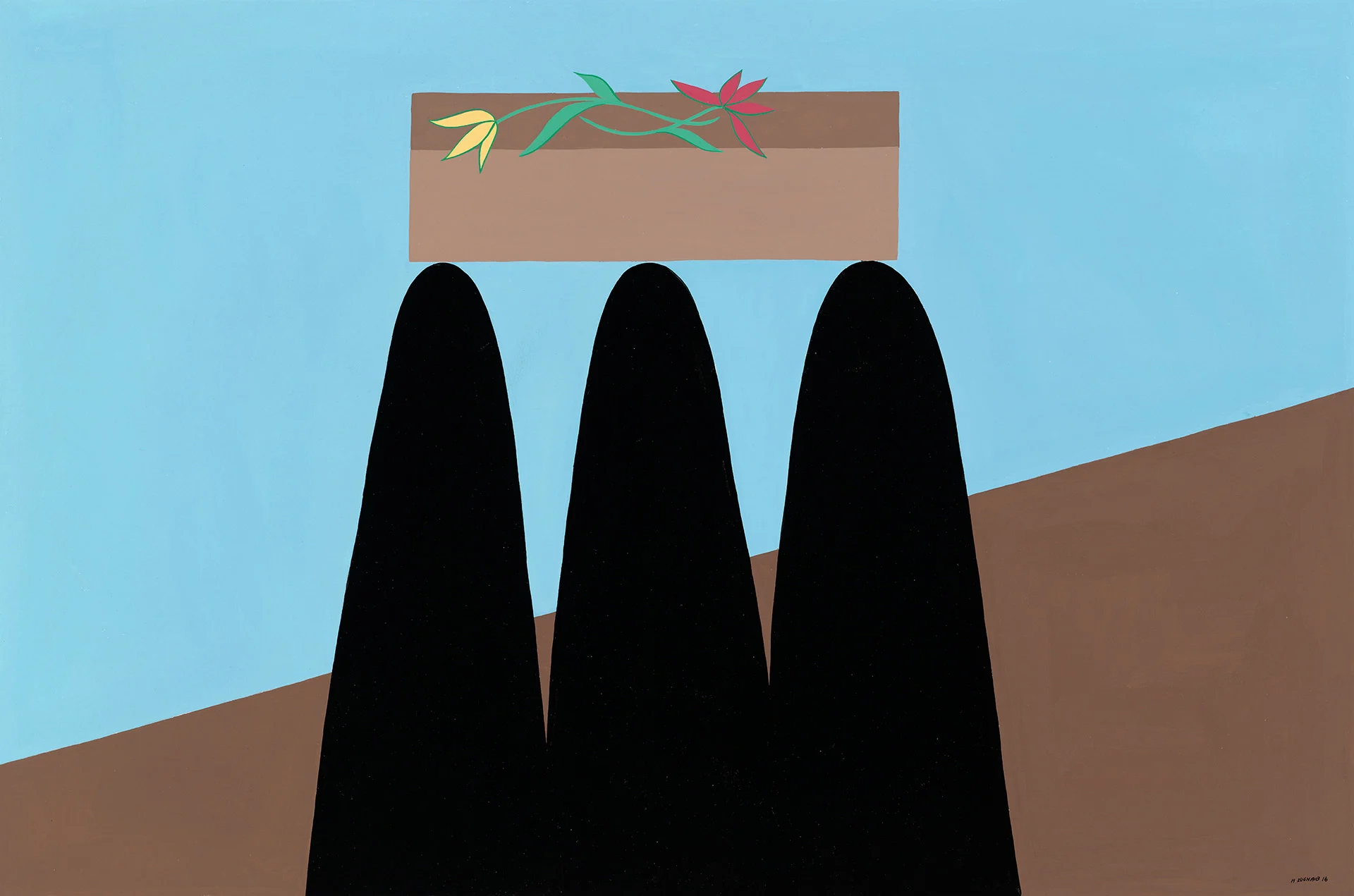

Since being forced to leave Lebanon aged just 16, when civil war broke out in her home country, artist Helen Zughaib is used to adapting to new countries.
Her family tried various places in Europe before settling in the US, where she now lives and works. “Leaving quickly,” she says, “leaving everything behind, forces you to recreate yourself and dive into your new surroundings to find your way again.”

Although she moved a lot, it was that first time leaving Lebanon that had the biggest effect. “I think when you’re uprooted due to war, you never completely let go of what you lost or left behind,” she says.
This left Helen with an unusual hole in her life, since she’s unsure what was once in its place. “There seems to always be a nostalgia, a question of ‘what if?’ lingering in the background somewhere,” she says.

I believe people respond to beauty, even if what I depict is difficult to talk about.
An unpredictable upbringing can have its positives. For Helen this was her continuous exposure to different cultures and experiences. “The constant moving introduced me to many different people,” she says. “You kind of grow a new skin when you leave the comfort of your surroundings and plunge into a new one.”
These experiences heightened Helen’s ability to empathize, as she met so many different people along the way. “Finding shared humanity, even in the harder times, creates a more compassionate art I think,” she says.

Helen’s paintings mostly depict life in the Middle East, and her aim is often to change Western perspectives and preconceptions. After 9/11, she made it her mission to fight the increasingly negative ways Arabic countries are portrayed in the media.
More recently, the Western gaze has been drawn to the refugee crisis, and Helen’s latest collection, the Syrian Migration Series, captures Syrian refugees fleeing their homes. She was influenced by Jacob Lawrence’s 1941 Migration Series, which depicts the millions of African Americans moving from the South to the North of the USA in the first decades of the 20th Century.


Art can create emotions and ways of seeing from someone else’s perspective.
By drawing parallels between the situation in Syria and the Black experience in America, Helen hopes to make her series more relatable for people for whom the Middle East can feel a world away.
This is echoed in her choice of color palette in the Syrian Migration Series, which renders moments of sheer terror in vibrant, bright colors.
“I believe people respond to beauty,” she explains. “Even if what I depict is difficult to talk about, or difficult to face. If I have created a painting that you find beautiful, you are looking at it and that’s already a great start.” Helen hopes that once she has drawn the viewer in, they will be ready to hear the message in her work.

If she can even slightly challenge a stereotype, or make someone think about the “other” for the first time, she has succeeded. “However small the step, it has instigated a new way of thinking or understanding, that could ultimately lead to a mutual respect for one another.”
Helen has felt the push and pull of two cultures for most of her life. This comes through in her work, in her ability to capture Middle Eastern experiences, packaged in a way that’s accessible to the Western eye. “I’m constantly trying to unite those two worlds through my work,” she says.

“Ultimately, art can address issues that politicians or governments cannot,” she says. “Art can create emotions and stimulate compassion and ways of seeing from someone else’s perspective. I do think art ultimately unites us. It creates that space for understanding, for dialogue, and for that all important emotion, empathy.”
Words by Alex Kahl.

